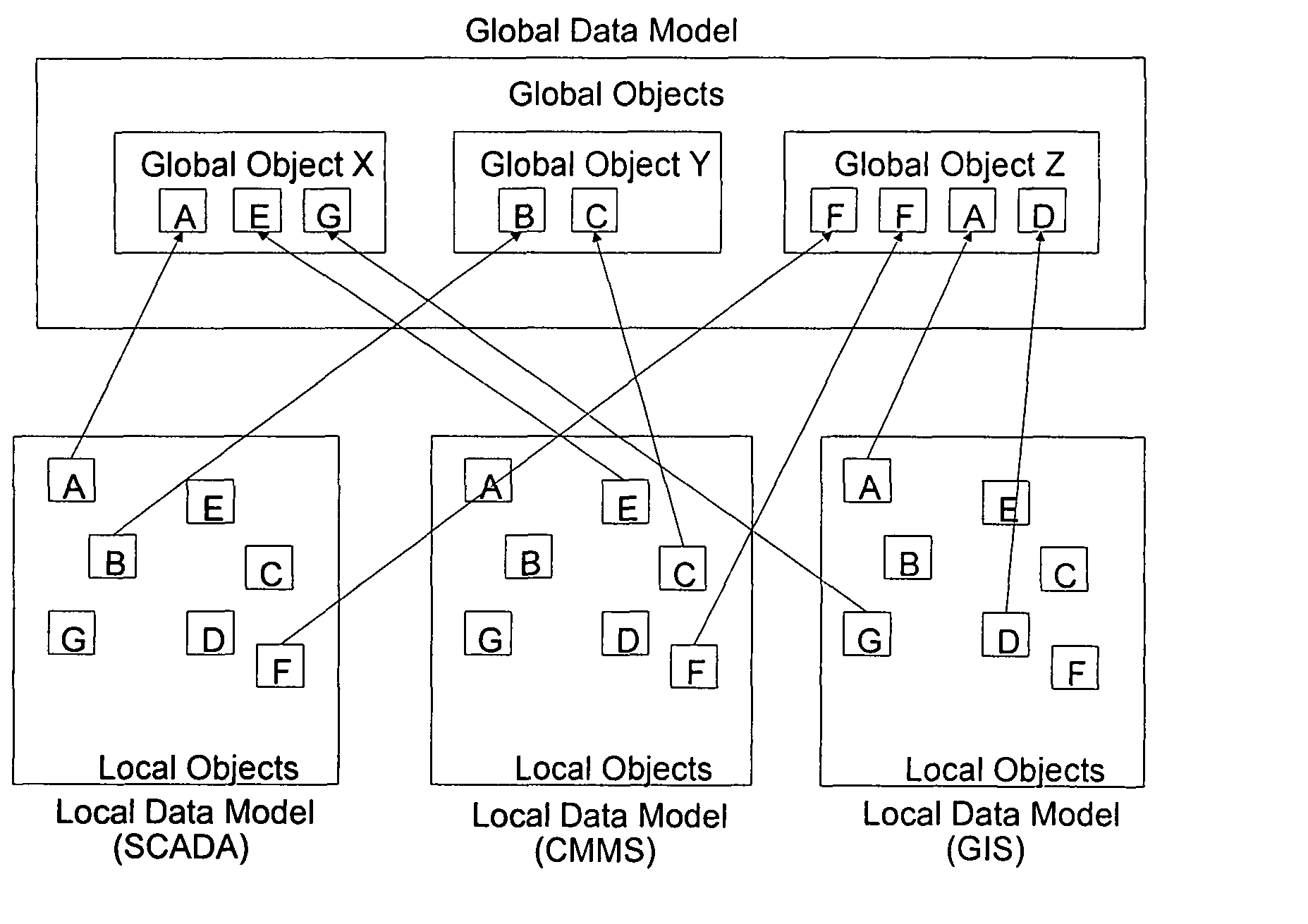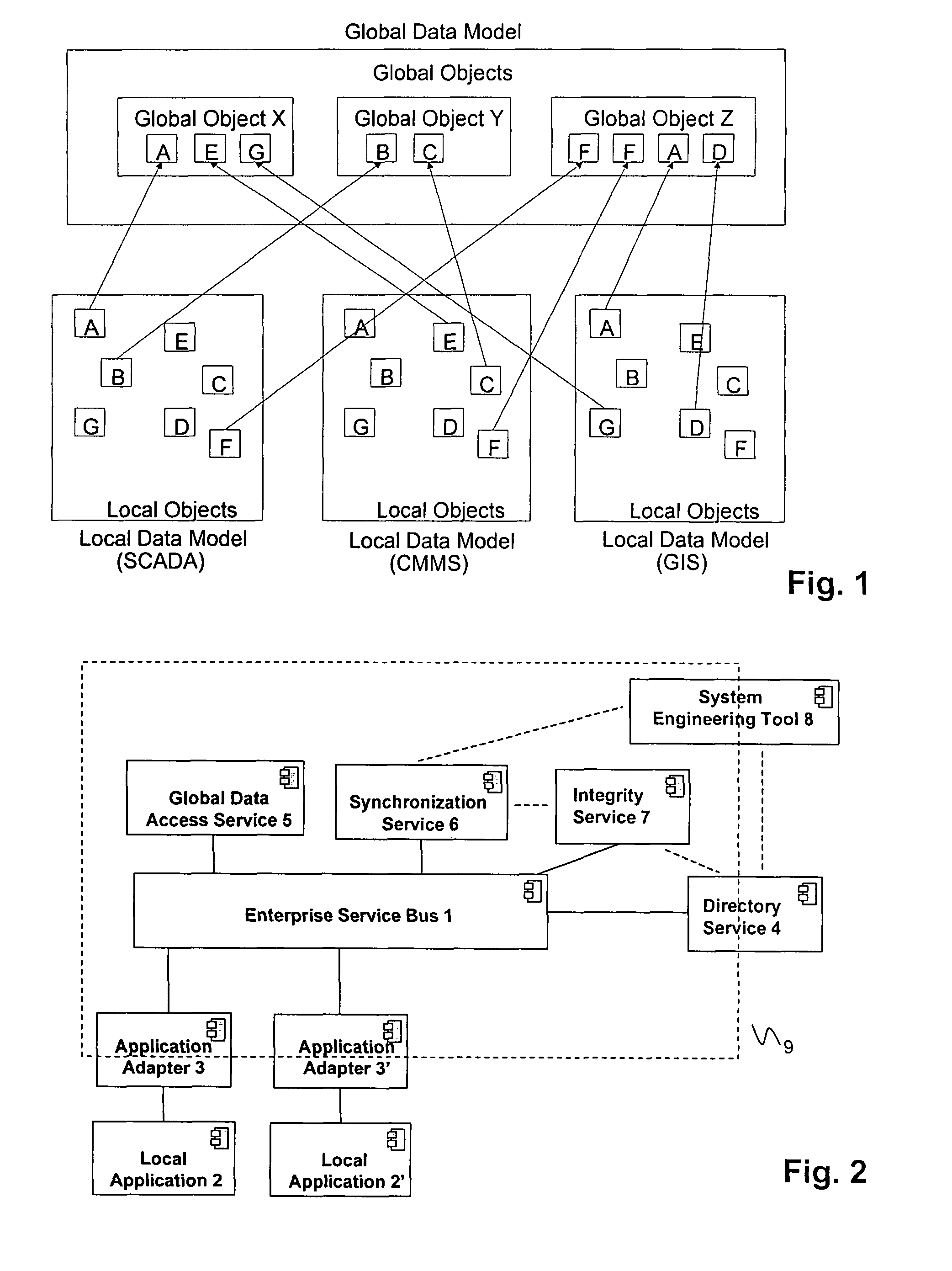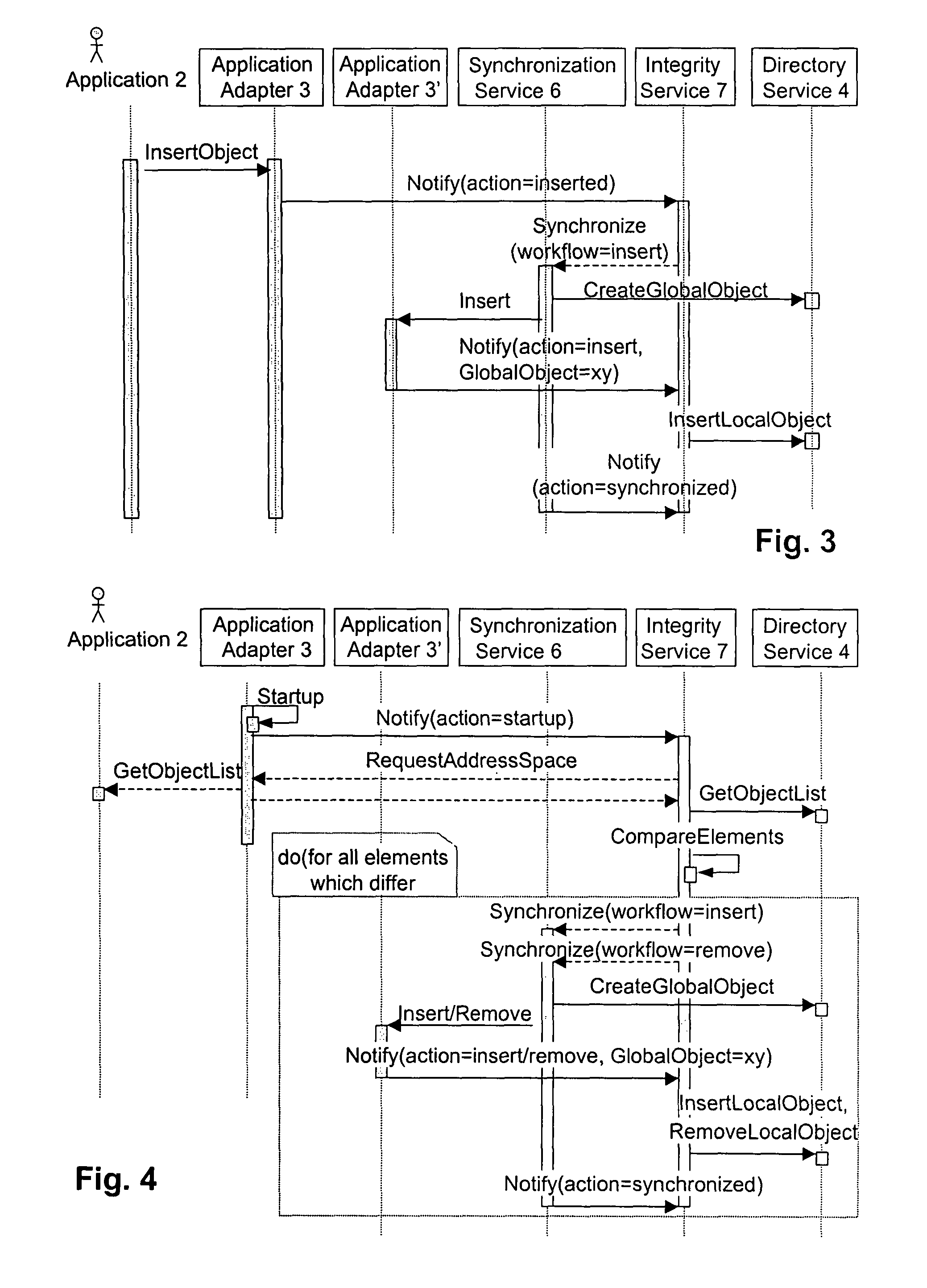Maintaining data consistency between integrated applications
a technology of data consistency and integrated applications, applied in the field of industrial information technology, can solve the problems of complex synchronization and consolidation of information stored in various systems in operation, insufficient coordination and automation, inconsistent data, etc., and achieve the effect of facilitating interoperability, facilitating the maintenance of synchronization or consistency, and facilitating the maintenance of data consistency
- Summary
- Abstract
- Description
- Claims
- Application Information
AI Technical Summary
Benefits of technology
Problems solved by technology
Method used
Image
Examples
Embodiment Construction
[0017]To overcome the challenges of interoperability between the local applications, so-called integration solutions are being developed. An exemplary way of interacting between the local applications, or their corresponding local data models, respectively, makes use of a global data model such as the Common Information Model (CIM) according to the standard IEC 61970 in the case of power utilities. With this concept, point-to-point connections between the local applications are avoided, since all local data or information models only “translate” into, and communicate via, the global data or information model. Thus, adding a new local application requires developing an adapter or interface between the corresponding new local data model and one single global data model, instead of developing translators for all other local data models.
[0018]The real-world physical assets or devices, such as the transformers, breakers or stations of a utility, are modeled in a local application as loca...
PUM
 Login to View More
Login to View More Abstract
Description
Claims
Application Information
 Login to View More
Login to View More - R&D
- Intellectual Property
- Life Sciences
- Materials
- Tech Scout
- Unparalleled Data Quality
- Higher Quality Content
- 60% Fewer Hallucinations
Browse by: Latest US Patents, China's latest patents, Technical Efficacy Thesaurus, Application Domain, Technology Topic, Popular Technical Reports.
© 2025 PatSnap. All rights reserved.Legal|Privacy policy|Modern Slavery Act Transparency Statement|Sitemap|About US| Contact US: help@patsnap.com



